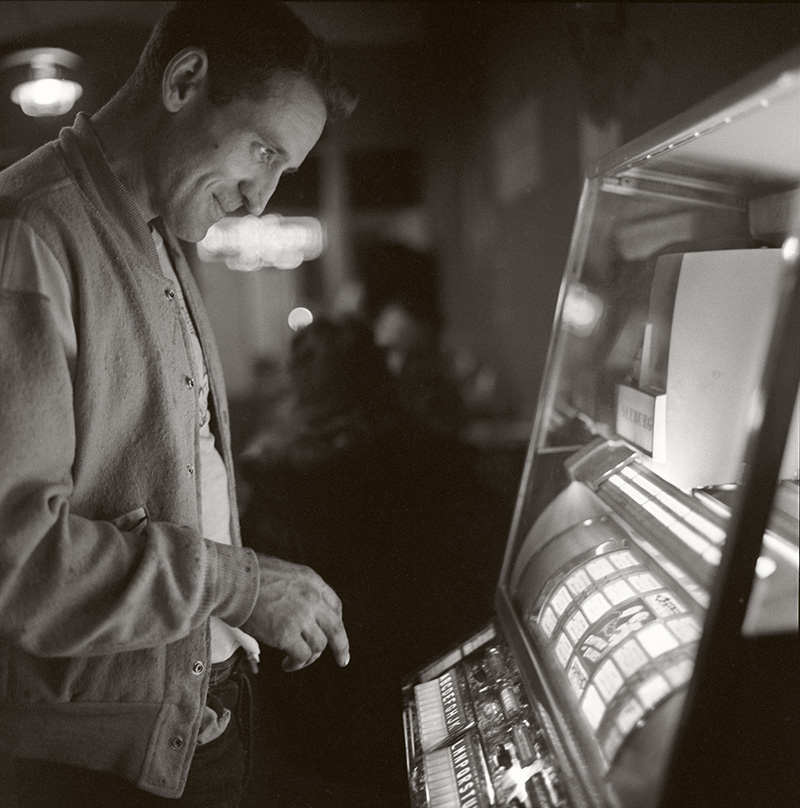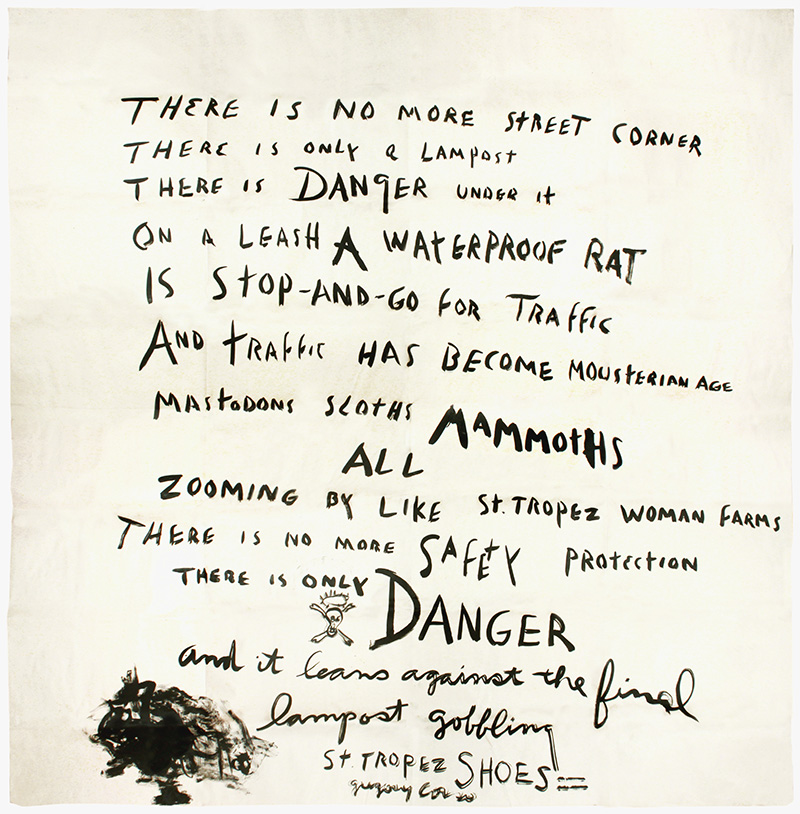ART-PRESENTATION: The Beat Generation
 Foreshadowing the youth culture and the cultural and sexual liberation of the ‘60s, the emergence of the Beat Generation in the years following the Second World War, just as the Cold War was setting in, scandalised a puritan and MacCarthyite America. Then seen as subversive rebels, the Beats appear today as the representatives of one of the most important cultural movements of the 20th Century.
Foreshadowing the youth culture and the cultural and sexual liberation of the ‘60s, the emergence of the Beat Generation in the years following the Second World War, just as the Cold War was setting in, scandalised a puritan and MacCarthyite America. Then seen as subversive rebels, the Beats appear today as the representatives of one of the most important cultural movements of the 20th Century.
By Efi Michalarou
Photo: Centre George Pompidou Archive
The Centre Pompidou presents “Beat Generation”, a retrospective dedicated to a movement that began with a howl, and it had a major impact on both poetry and culture in America, the survey examines Beat Generation in all its breadth and geographical amplitude, from New York to Los Angeles, from Paris to Tangier. The exhibition maps both the shifting geographical focus of the movement and its ever-shifting contours. For the artistic practices of the Beat Generation (readings, performances, concerts and films) testify to a breaking down of artistic boundaries and a desire for interdisciplinary collaboration that puts the singularity of the artist into question. Alongside notable visual artists, mostly representative of the California scene like: Wallace Berman, Bruce Conner, George Herms and Jay DeFeo. Also an important place is given to the literary dimension of the movement, to spoken poetry in its relationship to jazz, and more particularly to the Black American poetry of: LeRoi Jones and Bob Kaufman among others, that remains largely unknown in Europe, like the magazines in which it circulated (Beatitude, Umbra…). Photography was also an important medium, represented here by the productions of Allen Ginsberg and William Burroughs and a substantial body of photographs by Robert, Fred McDarrah, and John Cohen, all taken during the shooting of “Pull my Daisy”, (1959), as well as work by Harold Chapman, who chronicled the life of the Beat Hotel between 1958 and 1963. Focused on a precise historical period and deliberately making use of “low tech” media and means of reproduction (vinyl discs on turntables, carousel slide projectors, 16mm film projectors) this exhibition illustrates how profoundly the Beat Generation, in its expressive freedom, its breaking down of boundaries between disciplines and cultures, its “poor”, ecstatic and contemplative aesthetic, and also its violence , influenced the development of today’s countercultures, revealing it as their origin and casting light on ongoing problematics. The Beat Generation was born with William Burroughs, Allen Ginsberg and Jack Kerouac, who met at New York’s Columbia University in 1944. It was Kerouac who coined the term “Beat Generation”. It was meant to describe how they felt beat down, defeated and out of place among the returning soldiers and businessmen. The Beats were as much about an attitude and culture as they were about a literary style. The movement later shifted to the West Coast, where it gravitated around Lawrence Ferlinghetti’s City Lights bookstore and publishing house in San Francisco, and for a short time also the Six Gallery, which on 7/10/55 staged Ginsberg’s celebrated reading of his poem “Howl”, prompting a highly-publicised obscenity trial and bringing the Beat poets a paradoxical fame. Mainstream America was horrified by their supposed sexual deviancy and illicit drug use. Established poets and novelists looked down upon the freewheeling abandon of Beat literature. Politicians such as Joseph McCarthy identified elements of Beat ideology as Communist and a threat to the nation’s security. Between 1957 and 1963, Paris would be an important centre of activity for the Beat Generation: William Burroughs, Gregory Corso, Allen Ginsberg, Peter Orlovsky, Brion Gysin, and others regularly stayed at the “Beat Hotel” (9 rue Gît-Le-Cœur), , which became for them a laboratory of visual and sonic experiment. It was there in particular that Brion Gysin, William Burroughs and Antony Balch developed the cut-up technique, a form which borrowed more from collage and Cubism than traditional linear narrative, that Burroughs wrote his “Naked Lunch” and Brion Gysin invented his “Dreamachine”.
Info: Curator: Philippe-Alain Michaud, Associated Curators: Jean-Jacques Lebel and Rani Singh, Assisted by: Enrico Camporesi, Centre George Pompidou, Place Georges-Pompidou, Paris, Duration: 22/6-3/10/16, Days & Hours: Mon & Wed-Sun: 11:00-21:00, www.centrepompidou.fr


